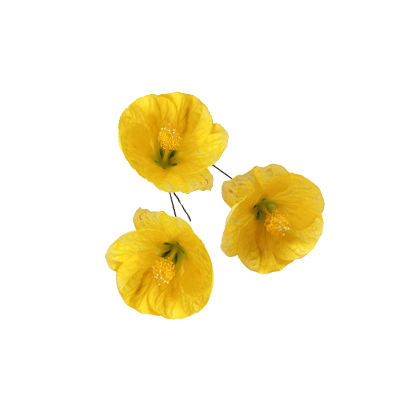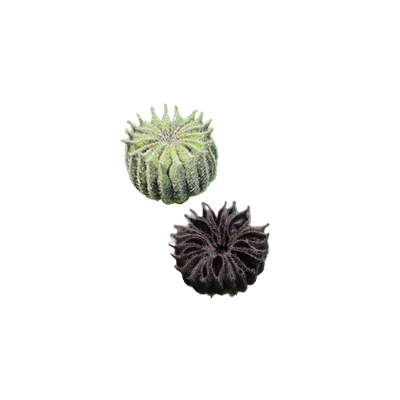Country Mallow
Abutilon indicum (L.) Sweet
Malvaceae
Location in our garden
Beneficial Weed
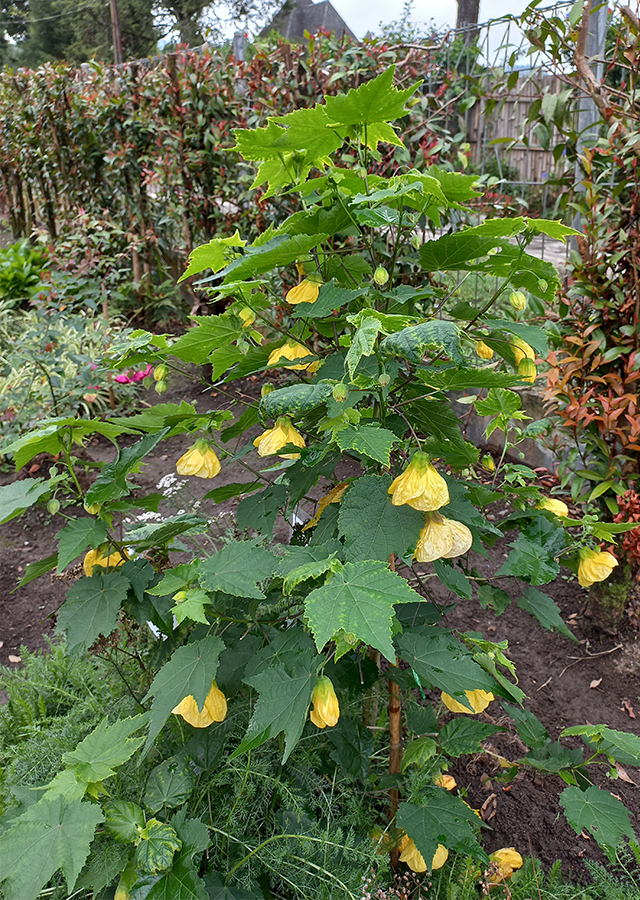
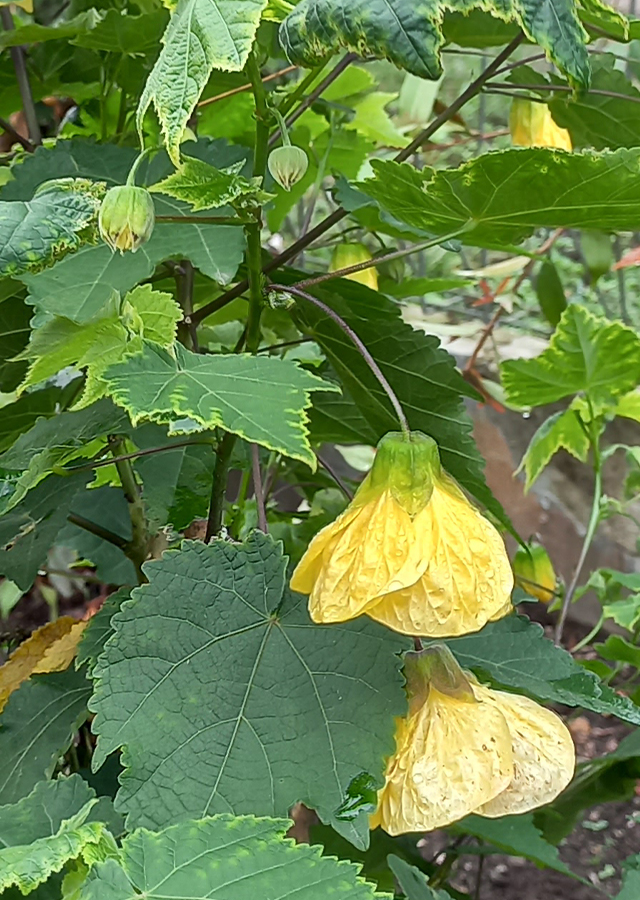
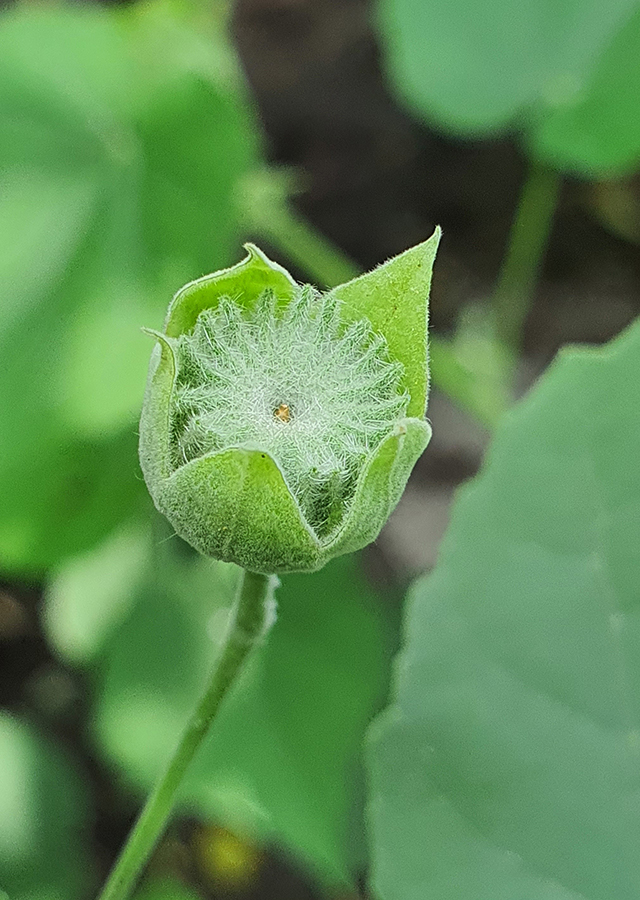
Synonym
Abutilon albidum (Willd.) Sweet
Abutilon album Hill
Sida asiatica L.
Habitus
Shrubs. A multi-branched, erect velvety-pubescent subshrub with round stem, often tinged with purple, up to 2.5 m in height.
Part Used
Leaves
Seeds
Bark
Flowers
Roots
The Whole Plant
Growing Requirements
Full Sunshine
Need Shade
Drought Resistant
Habitat
Riverbanks
Coastal
Roadside
Shrublands
Grassland
Terrestrial
Overview
It is reported to be native to Africa, Asia and Australasia, although it has been argued to be truly native only to Asia. A. indicum is distributed mainly in the tropics, subtropics and into warm temperate areas of the New and Old Worlds. The plant is sometimes gathered from the wild for local use as a food, medicine and source of fibre. It is grown as an ornamental in gardens.
Vernacular Names
Khitmi hindi (Arabic), Mo pan cao (Chinese), Fausse guimauve satinée (French), Indische Schönmalve (German), Fiore di dodici ore (Italian), Takasago ichibi (Japanese), Kanatnik indijskij (Russian), Botón de oro (Spanish), Khrop chak krawaan (Thai), Cây cối xay (Vietnamese), Dalupang (Philippines), Bunga kisar (Malay).
Agroecology
A. indicum is a common weed, found in open, sunny and warm areas, from sea level to ca. 1.600 m altitude. Requires a sunny position or part day shade in a fertile well-drained soil.
Morphology
- Stems - erect, many branched, 1-2.5 m, entire plant gray puberulent.
- Leaves - simple, circular-ovate or heart-shaped, 5-12 cm long and wide. Both sides softly velvety-pubescent, alternately arranged, with coarsely crenate-serrate margins. Petiole 2-4 cm, stipules subulate, 1-2 mm, curved outward.
- Flowers - solitary, yellow, 2-3 cm across, axillary. Petals 5, triangular-ovate, 7-8 mm, imbricate, deltoid-obovate, staminal-tube hirsute with stellate hairs. Pedicels 4-7 cm, articulate near apex, grey stellate puberulent. Calyx green, ovate and apiculate, lobes divided in the middle. Flowers open in the evening.
- Fruits - circular, flat topped, 1.5 cm diameter, black, with 11-20 radiating carpels, each carpel flattened, somewhat boatshaped. Fruits are hispid, long stellate scarbous, with awns erect.
- Seeds - reniform, slightly stellate, pubescent, dark brown or black.
Cultivation
- Propagated by seeds - germination should take place within a few weeks. Once the seedlings are large enough to handle, prick them out into individual pots and grow them on until large enough to plant out.
- By cuttings of young shoots and cuttings of half-ripe wood.
Chemical Constituents
Steroids, sapogenins, saponins, alkaloids, phenols, coumarins, flavonoids, tannins, asparagine, abutilin A, (R)-N-(1'-methoxycarbonyl-2'-phenylethyl)-4-hydroxybenzamide, essential oils (alpha-pinene, caryophyllene oxide, endesmol, farnesol, borenol, geraniol, geranyl acetate,elemene, alpha-cineole), eudesmic acid, ferulic acid, caffeic acid, 2-pentanone, 4-hydroxy-4- methyl, 2-Hexanol,2-methyl, 2-pentanol,2,3-dimethyl, m-xylene, p-xylene, o-xylene, c-sitosterol, a-sitosterol, cholest-5-en-3-ol, 4,4-dimethyl-,(3a) -, lupeol, lup-20(29)-en-3-ol,acetate,(3a)-, 9,19-cyclo-9a-lanostane-3a,25-diol, taraxerol, 4 hydroxyphenylacetic acid methyl ester, 5- thio-D-glucose, 5-allylsulfanyl-1-(4-methoxy-phenyl)-1H-tetrazole,E)-10-Heptadecen-8-ynoicacid methyl ester, and Z-11-hexadecenoic acid.
Traditional Medicinal Uses
- Studies have shown hepatoprotective, hypoglycemic, immunomodulatory, antinociceptive, antimicrobial, antimalarial, antifertiity, antioxidant, analgesic, and wound healing properties.
- All parts of the plant contain mucilaginous substances and these are in large part responible for the plants healing and soothng properties.
- An infusion of the root is used as a treatment for leprosy. It is taken internally as a cooling remedy for coughs and fevers.
- Bark is astringent and diuretic.
- The juice of the leaves is demulcent and diuretic.
- A decoction of the leaves is used to treat fever, colic etc, and is used externally for cleaning wounds and ulcers.
- A paste made of the leaves or seeds is applied to wounds, boils and ulcers.
- A decoction of the flowers is used to treat fever, colic, and for cleaning wounds and ulcers.
- The seeds are laxative and are useful in cases of haemorrhoids and cough.
- Seeds burnt on charcoal, and the recta of threadworm affected children are exposed to the smoke.
Part Used
Reference Sources
- Fern, Ken. Useful Tropical Plants. (2021). Abutilon indicum. https://tropical.theferns.info/viewtropical.php?id=Abutilon+indicum. 08-10-21
- Stuartxchange. Philippines Medicinal Plant. (2018). Abutilon indicum. http://www.stuartxchange.org/Malbas. 08-10-21
- Cabi. Abutilon indicum. https://www.cabi.org/isc/datasheet/1979. 08-10-21
- National Parks. Flora & Fauna Web. (2019). Abutilon indicum. https://www.nparks.gov.sg/florafaunaweb/flora/1/5/1582. 08-10-21



